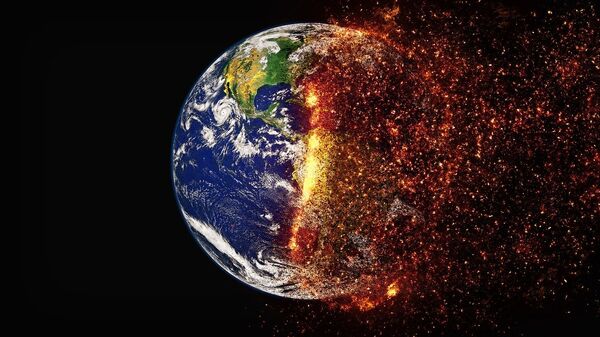The National Oceanic and Atmospheric Administration (NOAA) and The National Aeronautics and Space Administration (NASA) each published global climate results that name 2018 as the fourth warmest year the Earth has endured in at least 139 years.
NASA registers 2018 "global temperatures" at 1.5 degrees F (0.83 degrees C) warmer than their average, while NOAA recorded "global land and ocean surfaces" 1.42 degrees F (0.79 degrees C) above the 20th century average.
According to NOAA findings, Europe in particular experienced its "warmest year on record," as many countries, including France, Germany and Switzerland, dealt with their hottest 12 months in recent history.
It's official! According to @NASAGISS & @NOAA, Earth's 2018 global surface temperatures were the fourth warmest since 1880, with warming trends strongest in the Arctic region 🌡️. Stay on top of the trends at: https://t.co/oyaJrze27T pic.twitter.com/fSkYmG720m
— NASA (@NASA) February 6, 2019
"The impacts of long-term global warming are already being felt — in coastal flooding, heatwaves, intense precipitation and ecosystem change," NASA Goddard Institute for Space Studies Director Gavin Schmidt detailed in the agency's release.
Earlier this month, Sputnik reported that Australia's current heatwave, with temperatures exceeding 30 degrees C in some areas, is expected to continue through April, according to the country's Bureau of Meteorology. The NOAA data ranks 2018 as Australia's third warmest year since 1910.
Trailing behind 1973 and 1983, the contiguous US' national average for precipitation last year was 34.63 inches, reports the NOAA. While the East Coast received record precipitation during 2018, the majority of the Midwest and West regions saw a dry year.
And: U.S. 2018 precipitation total ranks 3rd wettest on record behind 1973 and 1983: @NOAANCEIclimate: https://t.co/5sG3WYpmU2 #StateOfClimate pic.twitter.com/ZlEoEnHDRG
— NOAA (@NOAA) February 6, 2019
Both reports additionally conclude the Arctic region continues to see a loss of sea ice. NASA adds that the melting of Greenland and Antarctic ice sheets contributed to a rise in sea level.
"This warming has been driven in large part by increased emissions into the atmosphere of carbon dioxide and other greenhouse gases caused by human activities," Schmidt said.
NASA clarified that it gathers its measurements from "6,300 weather stations, ship- and buoy-based observations of sea surface temperatures, and temperature measurements from Antarctic research stations."




